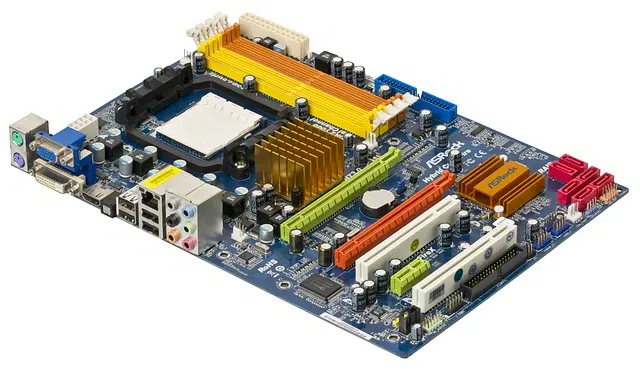
The motherboard is a central component of a computer.
The motherboard , motherboard or motherboard is a printed circuit card that enables the integration of all the components of a computer . For this, it has basic software known as BIOS , which allows it to fulfill its functions.
Motherboard functions
But what functions are basically those performed by every motherboard or motherboard? There are several of them and they are all important and fundamental to achieve the correct and optimal functioning of any computer.
Specifically, among these tasks would be data communication, control and monitoring, administration or management of electrical energy as well as its distribution throughout the computer, the physical connection of the various components of the aforementioned and Of course, timing and synchronism.
Your connectors
The motherboard houses the necessary connectors for the processor, RAM, ports and the rest of the boards (such as the video card or network card ).
Currently, among the most important and fundamental connectors that every motherboard has are the sound connectors, the USB port, the parallel port, the firewire and serial ports, the Network port and the PS/2 type.
The sound ones are those used to connect from microphones to speakers while the aforementioned USB is the one used to connect all types of peripheral devices such as mice, printers or a scanner.
Concepts related to the notion of motherboard
There are several concepts linked to motherboards that must be understood to know how this motherboard works. For example, the set of the main integrated circuits that are installed on the motherboard is known as a chipset .
The socket is an electromechanical support and electrical connection system that allows the fixation and connection of the microprocessor to the motherboard.

It is possible to recognize multiple connectors on a motherboard.
On the other hand, a slot is a slot found on the motherboard and that makes it possible to connect different additional or expansion cards to it, which, in general, are used to control peripheral devices such as printers. Current computers usually have between eight and twelve slots.
IDE or ATA ports are those that control data storage devices, such as hard drives. Other important ports on a motherboard are PS/2 (for connecting the mouse and keyboard ), USB , COM1 , and LPT1 .
Motherboard Types
Finally, it should be noted that there are different types of motherboards, such as XT, AT, Baby-AT, ATX, Mini-ATX, micro ATX, LPX, NLX, Nano-ITX, BTX, WTX and ETX , among others.
The aforementioned ATX motherboard is characterized, for example, by the fact that it is the easiest both when it comes to placing it and when it comes to operating in terms of ventilation. Meanwhile, the Baby-AT was the one that years ago became the most used due to its reduced shape and its adaptation to any type of box, but the circumstance that made it stop being the primary one was that its components are very close and That sometimes brought a lot of operating problems.
